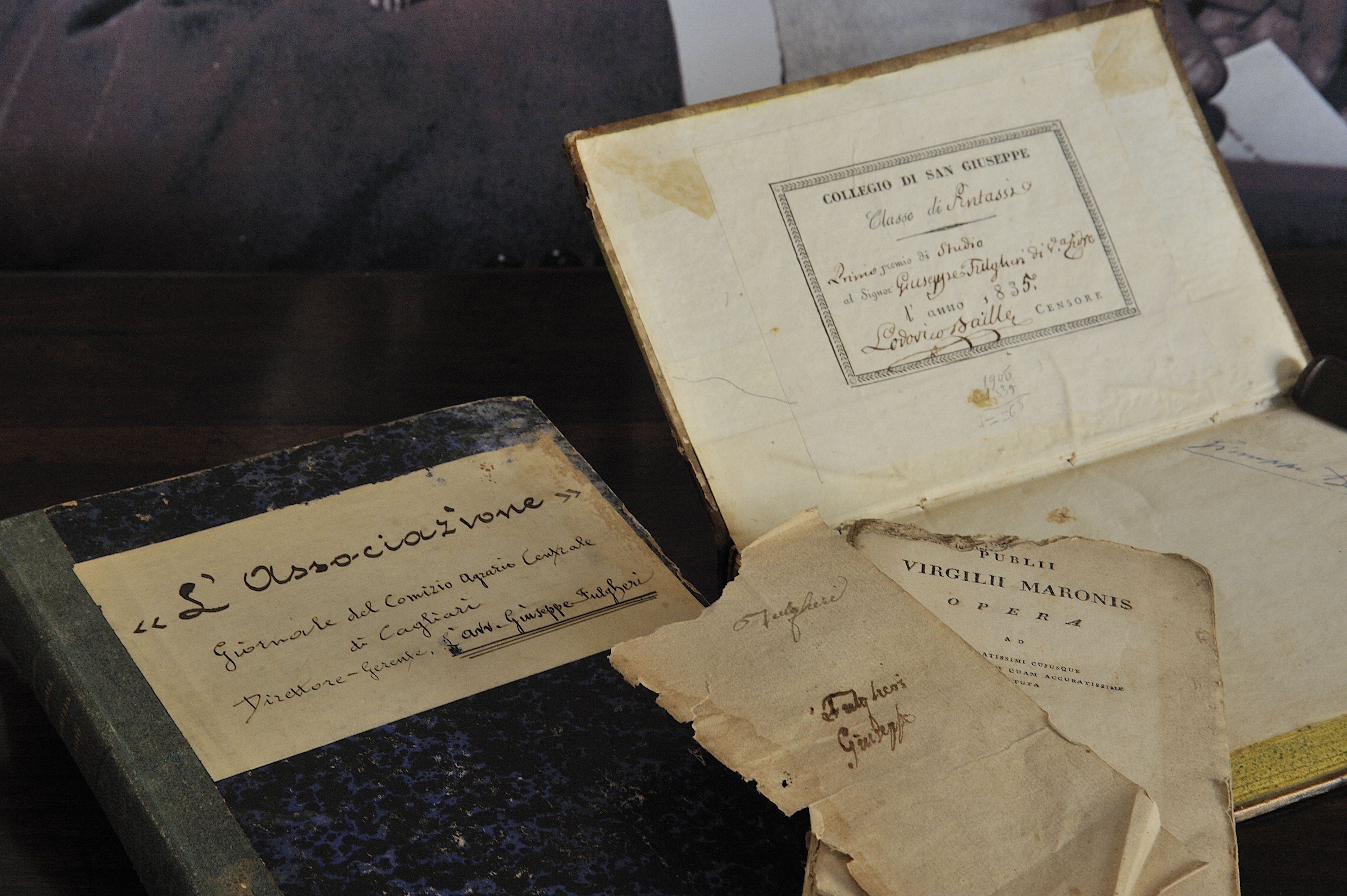Literary activity
All of Giuseppe Dessì’s narrative work is strongly characterised by a naturalistic interpretation that recalls him of his homeland.
Right from his first novel, San Silvano, the world of the main characters is, other than that of their names, of the mountains, valleys, villages surrounding the gigantic Linas Mountain, that part of Sardinia that becomes Parte d’Ispi. His Sardinia is the background, and at the same time also the author of his literary inspiration. And his main characters, despite being so modern and aware of being part of an extremely vast reality, live almost in symbiosis with the natural elements of a land that is identified trough past events and its geography, on occasion meticulous. This characteristic, on the other hand, does not only refer to a need for literary expressionism, but also reflects his appreciation of the world and his intellectual and artistic formation. From the pages of his diary we learn that at a very young age, rather than pass hours within the school’s walls he preferred long outings in the surrounding countryside or chatting with the town’s elderly who had stories to tell about history and the hard grind of everyday life. These are the post war years and Dessì, coming from a well off family of landlords, absorbs, as is only possible at that age, every aspect of his fellow countrymen’s existence. He observes and knows off by heart the work in the fields, the handiness of the women, as well as the sounds and silence of the woods and the mule tracks of that part of Sardinia. And all of these aspects are given back to us, in a literary format, in the course of his artistic output. In this sense his narration is comprehension and re-comprehension.
His first novel, San Silvano, already contains in a nutshell the essential elements of his entire poetic production. San Silvano is the point of origin, the natural habitat that we carry inside of us wherever we go, examined closely by our memory, as it is essential to rediscover to enable us to truly understand things, life and ourselves. In Disertore the journey, recognisable and described in an appropriate way so as to provide the most intimate details of the main characters, becomes on the other hand more anonymous almost with the purpose to not distract the reader’s attention from the pain and persistence of Mariangela Eca. The event takes place during the post war years in a far away town in Sardinia where the town officials decide to build a memorial to those lost at war. Mariangela lost two sons during that war, one of which, Saverio, was classified officially missing. But only her, along with the priest that she was serving, knew that that son was not a hero, but in reality a deserter, having looked after him in secret during his last days. Worker’s riots and the first manifestations of the Fascist period in the background of Italy’s post-war history.
Thanks to Dessì’s ambition to become an entry in the list of those writers who aspired to make a difference, in the thirties, new stylistic solutions to the Italian novel meant that there was a need, as a Sardinian writer, to distinguish himself from literary ideology and from the style of the most famous Sardinian writer Grazia Deledda. The work that achieved this best, other than the already mentioned San Silvano, is without a doubt Michele Boschino, a novel released in 1942. The piece was received with approval from critics not only thanks to its original twofold style, but also due to its clever representation of moral solitude and the interior drama of a Sardinian countryman. In I passeri, that takes place during the Second World War and Introduzione alla vita di Giacomo Scarbo, Dessì introduces the figure of Giacomo, who represents a type of alter ego of the author. Giacomo Scarbo can be found through out Dessì’s work: from the foreword of his first book of short stories, La sposa in città, to the draft of the belated novel La scelta. Giacomo Scarbo is a friend that never truly existed but who Dessì would have liked to have resembled, the crazy painter who frequented the squares of San Silvano / Norbio / Ruinalta / Villacidro, he who died young, fighting against Fascism in the International Brigades in Spain.
In 1964 Dessì’s work as a writer, and also as a scriptwriter and literary critic received a severe blow due to a stroke. But it is during these very years, during which he has to live with his illness that he worked on the draft of his master piece Paese d’ombre, a memorable fresco of Sardinia during the late eight hundreds, but it is not assimilated to the realist novel; it is an effective literary reconstruction of a familiar saga, without the distinguishing traits of a memorial; containing historical references in a chronicle manner, yet it is not a book on history. Angelo Uras, the story’s main character, is followed through out his life on a journey that intertwines with the great history of that time that even manages to bursts into the most remote places in the island. A story, however, in which Angelo plays an active role. The novel opens and closes with two elderly characters: Filgher the lawyer and rich landlord who protected the poor from the abuse of power employed by the Prinzipales, and the old Angelo Uras who showed his fellow citizens the way to deal with embezzlement. An environmentalist novel ahead of its time due to the way it deals with the problems relative to indiscriminate deforestation, but also extremely modern due to its ability to capture the most profound conception of the writer’s activity, that of realising an act of the most profound acknowledgement of the world.
